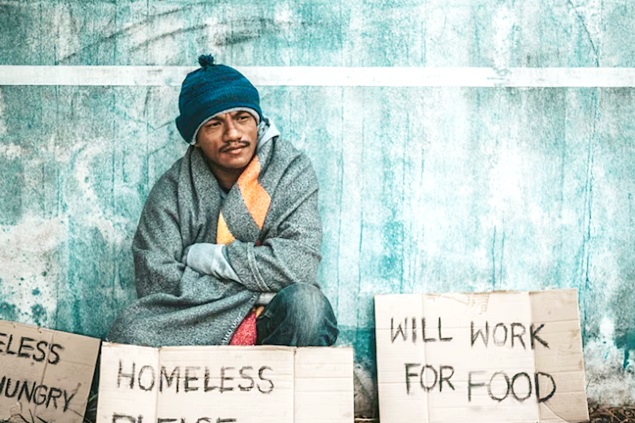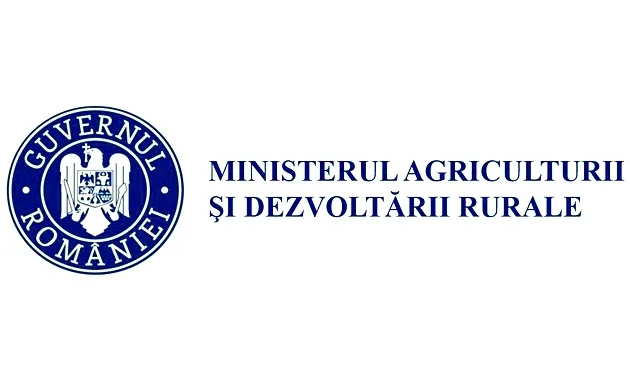1234

According to the latest report published by FitchSolutions, global agriculture will face significant challenges until 2050 (and beyond) due to climate change and population growth, which will combine to pose a acute threat to global and regional food security. While the impact of climate change on agricultural production will be inconsistent, some areas will be more vulnerable to factors such as higher temperatures and rising sea levels. The increasingly interconnected nature of the global food system will lead to negative supply shocks and price volatility spreading worldwide.
Agribusiness will face pressures from both policies and consumers to improve its sustainability profile, presenting a greater challenge for carbon-intensive subsectors, such as livestock (cattle) and palm oil, while also opening up opportunities for new agricultural models, such as regenerative agriculture and agroecological principles.
The push towards increased use of biofuels in critical markets will require greater land use for biofuel feedstock production. This will come at the expense of food crops, putting pressure on global food production.
The global agricultural sector will also face an increasingly significant labor shortage, which is expected to be mitigated by the development of agtech and increased adoption rates on farms.
Climate change will exacerbate global food insecurity to acute levels
Climate change will exacerbate global food insecurity to acute levels. Climate change has a direct and negative impact on global food security, which will further increase in the coming decades as global average temperatures continue to rise. A one-degree increase in global average temperature will result in a 4.1% to 6.4% decline in wheat yields, equivalent to 15% of global wheat yield gains from 1990.
However, temperature increases will vary between regions, with already warmer areas, such as North Africa, experiencing larger crop losses, while other regions, such as Canada and Russia, will benefit from the expansion of cultivable land away from the equator.
Additionally, climate change will increase the frequency and severity of extreme weather events, such as droughts and floods, leading to more volatile agricultural markets, eroding farmers' livelihoods, and inducing greater famine-induced migration.
A projected increase in the prevalence of water scarcity will lead to an increased likelihood of soil erosion and desertification. Furthermore, we expect the use of food export restrictions and other forms of agricultural protectionism to become more common, amplifying the volatility of agricultural commodity prices.
Other means to ensure better food supply may include increased investment in storage capacity and continued development of genetically modified crops with traits suitable for harsher climates, such as drought and heat resistance.
The spread of climate shocks and other weather-related shocks in global markets will be accelerated by the homogenization and continued interdependence of internal and regional food systems, as reflected in the convergence towards a "global standard diet" for an increasingly larger share of the world's population.
These exogenous shocks to food security, combined with downward pressure on agricultural yields, will be most strongly felt in regions where food security is already strained, such as Sub-Saharan Africa. Moreover, these tensions on food access will be exacerbated by the expected increase in the global population in the coming years.
The environmental footprint challenge
By 2050 and beyond, global agribusiness will face the challenge of reducing the sector's environmental footprint while maintaining adequate food supply levels to feed a growing global population.
The global food system is the main driver of biodiversity loss, water eutrophication and deforestation, while also accounting for a third of all human-induced greenhouse gas emissions. Until now, agribusiness has flown under the radar when it comes to plans to reduce emissions.
Until COP27, food systems were not given a dedicated day at the main UN climate change conference, while talks in Sharm El Sheikh failed to agree on a clear course of action.
We believe that economies that implement structural transition programs for their agricultural sectors earlier, for example by including agriculture in their NDCs, will have an advantage. First, having fixed emissions targets will establish firmer corporate commitments to the necessary changes that need to be made.
Second, this commitment will provide an impetus for the development of domestic suppliers of new technologies and other green inputs such as green fertilizers, allowing for a potential first-mover advantage.
Increasingly by 2050, we believe that increased consumer awareness will favor organic food producers and retailers. We believe two agricultural areas where sustainability pressures will be most evident are deforestation, with the new EU law on deforestation being a model for other markets to follow, and emissions from the livestock sector.
The latter will be a benefit to firms producing alternative plant and cell-based protein sources and a threat to carbon-intensive livestock farmers, especially beef cattle farmers. We expect opposition to initiatives to reduce animal emissions, as seen in the Netherlands and New Zealand, to become more common.
All these disruptions to business-as-usual farming practices will also pose a threat to both traditional but slow-moving agents and specific agricultural products most sensitive to increasing consumer awareness, such as olive oil. palm.
Agricultural production growth will slow
Global agricultural production growth is slowing, falling to a six-decade low in the 2010s, which will undermine food security by 2050. In the 1970s and 1980s, the five-year average yield growth of maize, rice and wheat was was 2.1%, 1.9% and 2.2% per year, while the corresponding growth rates in the 2010s decreased to 1.4%, 0.9% and 1.6% respectively per year.
Climate change is likely a major contributor to lower growth rates, but other factors resulting from the intensive nature of modern industrial agriculture, such as land degradation and soil erosion, both of which have undermined the ability of agricultural soils to support crops, have also contributed also when decelerating.
The main challenge facing agriculture in the future is that its main driver of growth up to this point, the intensification of input use, has not only weakened future growth potential, but will also face limits to further expansion.
Global agricultural land use, for example, has been on a downward trend since the turn of the century, weighed down by population growth, urbanization and the expansion of transport, network and other infrastructure, while concern over deforestation and biodiversity loss has increased and she.
Although there is no single 'soil life expectancy', more than 15% of conventionally managed soils have a lifespan of less than 100 years. We note, however, that some regions, including Sub-Saharan Africa, where the use of agricultural inputs such as fertilizers remains low, have the capacity to reduce prevailing yield deficits relative to global averages and achieve a "recovery " of agriculture. growth.
Confluence of Changes
The confluence of climate change and global population growth will challenge the current structure of modern agriculture, requiring the system to produce more with a smaller impact if food security is to be maintained without compromising the environment.
In this space, we believe that new models of agricultural businesses will emerge, including regenerative agriculture, organic farming, and agroforestry, which are based on agroecological principles and practices, such as rejecting the use of chemical inputs and leveraging natural biogeochemical cycles (including carbon and nitrogen cycles).
These models are better suited to a new set of operational circumstances and environmental constraints. However, these new business models will be challenged by established agricultural operators, who will argue that only continued intensification of agriculture can protect global food security.
We observe, however, that each viewpoint has a certain potential vulnerability: sustainable intensification in terms of its compatibility with climate actions, and agroecology in terms of its capacity to meet the growing global demand for food.
In the coming decades, we believe that global biofuel production will increase, with its use seen as a critical component to help markets achieve greenhouse gas emission targets and contribute to increased energy security.
However, we observe that the increased demand for biofuel feedstock will divert critical agricultural inputs, such as arable land, water, and fertilizers, away from food grain production.
Impact of Biofuels
According to a study by the Institute for Energy and Environment, a non-profit ecological research institute, the current use of biofuels in the EU amounts to 5.1% of the region's total arable land, an area that, if used for food grain production, could provide the caloric needs of 120 million people.
While the emphasis on biofuel production varies from country to country, several major markets, including Brazil and India, have signaled their intention to stimulate long-term domestic biofuel production and consumption, with the latter moving towards increased ethanol blending mandates, which will increase from 10.0% in 2022 to 20.0% by 2030.
Similarly, following the approval of the National Biofuels Policy, Brazil will raise the biodiesel blending mandate from 10.0% to 12.0% in April 2023 and intends to reach 15.0% by 2026. Ethanol supply will also increase significantly.
While we observe that competition for vital agricultural inputs will be somewhat mitigated by efforts to find alternative feedstocks, we expect that biofuel feedstocks strongly dependent on inputs, such as sugarcane and corn, will remain primary feedstocks.
We expect that biofuel production will limit the availability of arable land for food crops. We note that tight farm finances lead to farm diversification, leading to the use of agricultural land for non-agricultural activities, such as in the UK.
Since 2011, renewable sources generation has been the center of diversification that has seen the strongest growth in the UK, with 1.0% producing solar energy in 2011/12, according to the Department for Environment, Food, and Rural Affairs, compared to 22.0% in 2021/22. As the sector moves away from dependence on financial subsidies, we expect to see this figure continue to grow in the coming decades.
Consequently, we believe that efforts on major markets to reduce dependence on traditional sources of energy, which we expect to persist in the coming decades, will require a more significant share of the world's arable land, reducing land availability for food crops and capping production growth.
At the same time, competition for resources such as water and fertilizers, in the case of traditional biofuel feedstocks, will put further pressure on global yields. As a result, we expect global food crop deliveries to narrow in the long term, as production growth is outpaced by growing global demand, contributing to rising prices and volatile markets.
A burdened industry
With the agricultural industry in developed markets (DMs) already burdened by labor constraints, we expect the sector to face further declines in the number of global agricultural workers in the coming decades, which will act as a key driver in development and adoption of new technologies.
In DM, population aging, failure to attract new labor to the agricultural sector, and immigration policies that reduce DM's ability to use the more abundant labor availability in emerging markets (EM) contribute to labor shortages at scale widely throughout agriculture. section.
Furthermore, while the shrinking pool of unskilled workers is more widespread in DM, as EM develops and educational outcomes improve, we expect the global pool of unskilled workers to become increasingly rare.
Labor shortages have a number of implications, one of which is increased crop wastage, which will contribute to higher prices for consumers. Crop wastage is already occurring in some DMs such as the UK. Following the UK's exit from the EU, the number of seasonal farm workers coming to work in the UK from Ukraine and Russia has increased considerably.
This labor pool has been adversely affected by the Russia-Ukraine war, which has crop losses induced by labor shortages, according to the National Farmers' Union of Great Britain. Despite facing a shrinking number of unskilled workers, agricultural immigration policies remain tight, with the UK planning to phase out seasonal worker visas to fill job vacancies with domestic workers and automation.
Out of necessity, we believe farms will become increasingly dependent on the development and on-farm adoption of agtech to fill the gap of a shrinking workforce, including robotics to help harvest crops and automated tractors. For farms able to move toward automated technology, the benefits are numerous, including not having to compete to attract traditional labor from an ever-shrinking pool with offers of higher wages and the ability to complete a harvest unaffected by changes in immigration policies.
However, while we expect a shrinking labor force to drive the development and use of labor-saving agricultural technologies, we note that high upfront costs will continue to limit the adoption of new technologies in a sector typically constrained by limited availability of cash.
In addition, we expect a high degree of variation in the use of new technologies across different markets and farm sizes. For example, on small farms, which typically have more limited resources, investment in expensive technologies is likely to remain low regardless of the challenges of a shrinking workforce, unless there is significant government help.
In Brazil, for example, where the agricultural sector is dominated by large-scale farms and where current rates of agtech technology adoption are already considerable, we expect to see higher rates of automation in the coming decades as the global workforce agricultural labor continues to decline.




